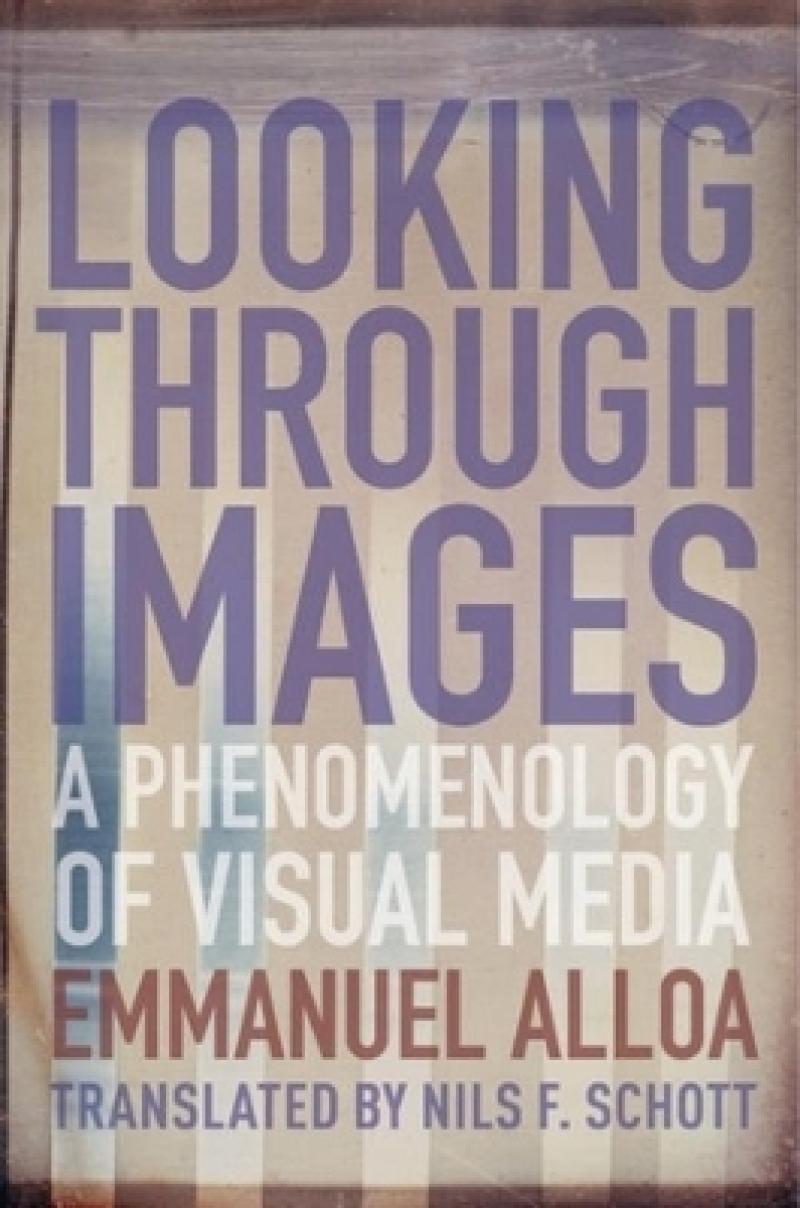In this innovative, rich, and powerful book, Emmanuel Alloa brilliantly shows why images don’t represent the real, but let the real come into being.
- Jean-Luc Nancy, University of Strasbourg,
Alloa’s tour de force provides an incredibly erudite and insightful perspective on the phenomenology of images. A must-read for anyone wishing to analyze the visual imperatives of the world, for which we have lacked the appropriate tools.
- Chiara Bottici, author of <i>Imaginal Politics: Images Beyond Imagination and the Imaginary</i>,
Emmanuel Alloa’s <i>Looking Through Images </i>is a real tour de force. A masterful study of images, media, and visual experience, it provides an ABC of philosophical struggles with these concepts, from Aristotle to Berkeley to Descartes, Husserl, Sartre, and beyond. What is an image? What is a medium? How do we know what we see, and see what we know? This book is a feast of learning that ranges across disciplines with admirable precision.
- W. J. T. Mitchell, author of <i>What Do Pictures Want? Essays on the Lives and Loves of Images</i>,
A real gift to the field of visual studies
- James Elkins, The Art Institute of Chicago,
In a lucid reinterpretation of the European tradition, Emmanuel Alloa shows that images are not the seduction or distraction of philosophy but one of its most robust and enduring problems. Here <i>Geistesgeschichte </i>shows itself the royal road to understanding media
- John Durham Peters, Yale University,
An exceptionally ambitious book that attempts nothing less than rethinking the fundamental questions of image theory… a must-read for anyone with a stake in the theory of image, media and imagination.
Radical Philosophy
Unfailingly acute and deeply informed… a remarkable book.
Continental Philosophy Review
an impressive, enriching, and immensely likeable work.
Journal of Aesthetics and Phenomenology
Alloa’s writings appear as a majestic scholastic body of work […] <i>Looking Through Images</i> is the ideal introduction to his work and a fundamental piece of literature in media theory.
Visual Studies
The book is valuable for dismantling the history and therein the biases of categories we are most familiar with in thinking of images.
Estetika Journal
Emmanuel Alloa retraces the history of Western attitudes toward the visual to propose a major rethinking of images as irreplaceable agents of our everyday engagement with the world. He examines how ideas of images and their powers have been constructed in Western humanities, art theory, and philosophy, developing a novel genealogy of both visual studies and the concept of the medium. Alloa reconstructs the earliest Western media theory—Aristotle’s concept of the diaphanous milieu of vision—and the significance of its subsequent erasure in the history of science. Ultimately, he argues for a historically informed phenomenology of images and visual media that explains why images are not simply referential depictions, windows onto the world. Instead, images constantly reactivate the power of appearing. As media of visualization, they allow things to appear that could not be visible except in and through these very material devices.
Introduction
1. Between Thing and Sign: The Hubris of the Image
2. Aristotle’s Foundation of a Media Theory of Appearing
3. Forgetting Media: Traces of the Diaphanous from Themistius to Berkeley
4. A Phenomenology of Images
5. Media Phenomenology
Conclusion: Seeing Through Images—for an Alternative Theory of Media
Afterword: Seeing Not Riddling, by Andrew Benjamin
Notes
Bibliography
Index
Produktdetaljer
Biografisk notat
Emmanuel Alloa is professor of philosophy at the University of Fribourg, where he holds the Chair for Aesthetics and Philosophy of Art. His books in English include Resistance of the Sensible World: An Introduction to Merleau-Ponty (2017), as well as a number of coedited volumes, including, most recently, Dynamis of the Image: Moving Images in a Global World (2020). He currently serves as president of the German Society of Aesthetics.Nils F. Schott is a lecturer in the Euro-American Program of the Collège universitaire de Sciences Po, Reims, and coeditor of, among other books, Love and Forgiveness for a More Just World (Columbia, 2015).
Andrew Benjamin is distinguished professor of architectural theory at the University of Technology, Sydney, and emeritus professor of philosophy at Monash University Melbourne. His recent books include Art’s Philosophical Work (2015), Towards a Relational Ontology: Philosophy’s Other Possibility (2015), and Virtue in Being: Towards an Ethics of the Unconditioned (2017).
